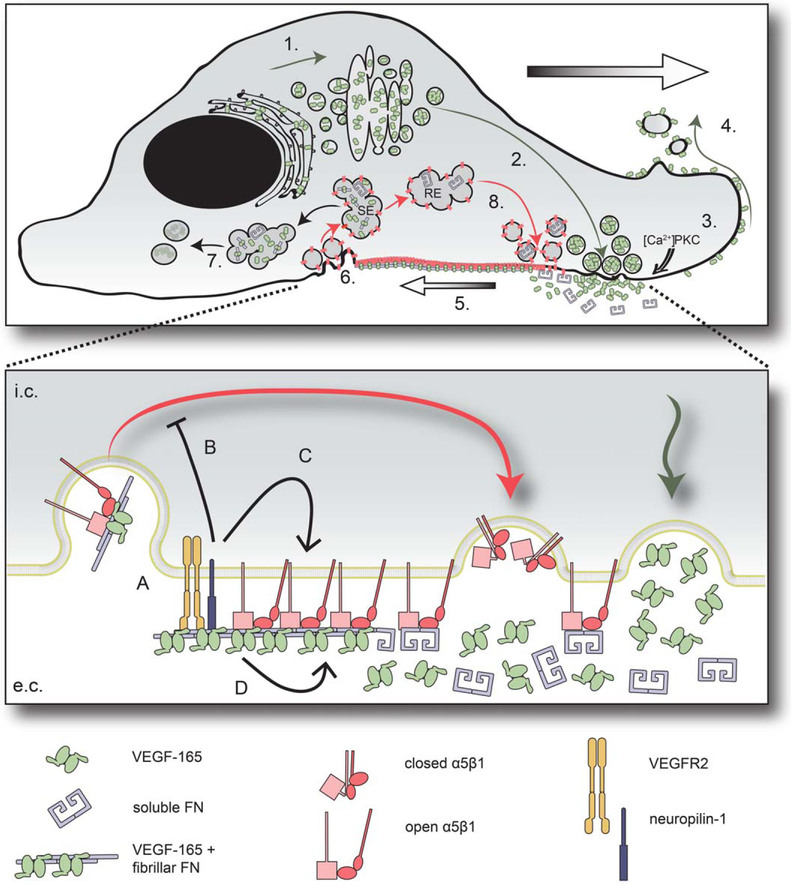FIGURE 7:
Model of targeted secretion, active matrix deposition of VEGF and its functions in astrocytes. (1) VEGF is translated in the rough endoplasmic reticulum and undergoes post-translational modifications in the Golgi (Guzman-Hernandez et al., 2014). (2) Postgolgi secretory vesicles target apical plasma membrane. (3) VEGF-165 is secreted upon local [Ca2+] increase or protein kinase C (PKC) activation (Guzman-Hernandez et al., 2014), and being sequestered in the ECM, it remains fixed to the membrane. (4) Surface-bound VEGF-165 covers shedding microvesicles. (5) α5β1 integrin heterodimers bind FN and are pulled inward by actomyosin contraction. Cytoskeletal tension transmitted on. FN leads to FN fibrillogenesis, which promotes VEGF-165/FN binding and VEGF-165 incorporation into FN fibrils. (6) VEGF-165/FN complexes and integrin heterodimers are internalized and targeted to a sorting endosomal compartment (SE). (7) VEGF is directed to degradation, while (8) part of FN (Shi and Sottile, 2008) and α5β1 integrins (Bretscher, 1989) are recycled to the surface (red arrows; recycling endosome - RE). The magnification demonstrates the possible molecular interactions at the level of fibrillar adhesions. A: VEGFR2 and neuropilin-1 are clustered to the adhesions and mediate VEGF-165 signal transduction. This signaling leads to decreased β1 integrin turnover in maturing cell-matrix adhesions. The direct mechanism may be (B) inhibition of β1 integrin endocytosis/recycling, (C) stabilization of β1 integrin in the adhesions by promoting open conformation, or (D) direct VEGF-165/integrin interaction leading to integrin stabilization.

